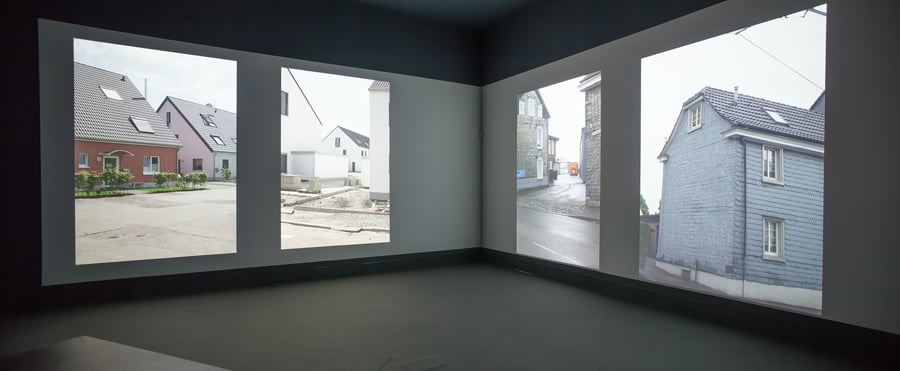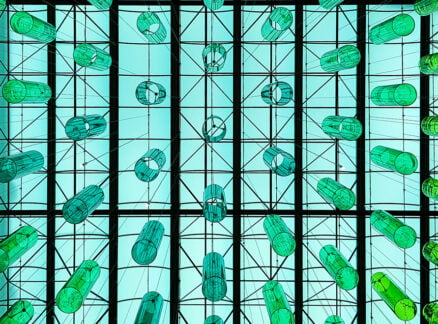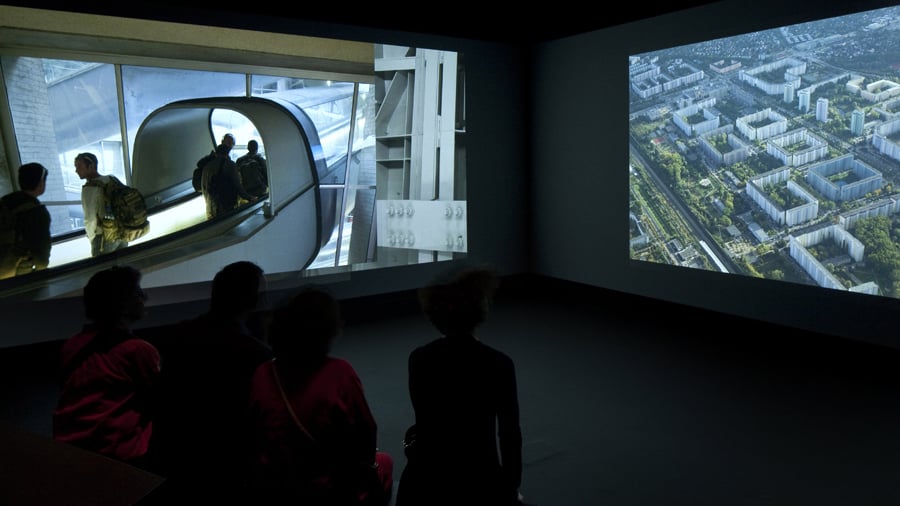
May 30, 2017
Rem Koolhaas on Competition “Torture,” Urban Erasure, and Europe’s Ills
During a talk at the Tate Modern, photographer Wolfgang Tillmans provoked compelling responses from Koolhaas, who abandoned the usual script.
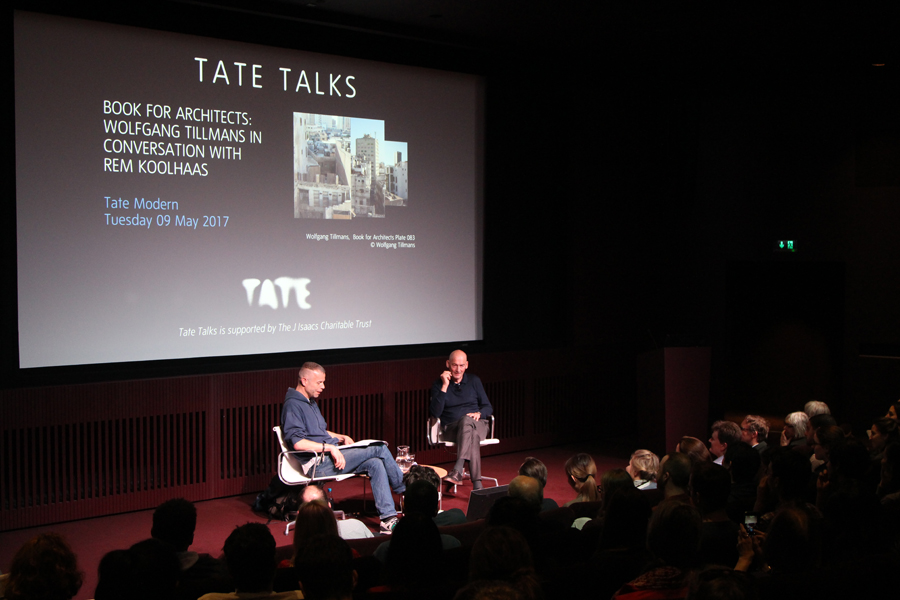
“There are certain questions I have always wanted to ask an architect,” said Wolfgang Tillmans at the Tate Modern’s Starr Cinema in early May. The event was pegged to his solo show 2017, now on view at the Tate’s Boiler House. The architect in question was Rem Koolhaas, whom Tillmans had invited to talk about architecture and his Book for Architects, an ongoing project consisting of still images of buildings shot over the past decade (and first mounted in Koolhaas’s central pavilion at the 2014 Venice Biennale).
Tillmans’s inquiries were at once naive and provocative in theme—from a building’s smell and personal regrets to the fate of Europe—and provoked compelling responses from Koolhaas, whose public appearance is all too often accompanied by a tight script and rehearsed slides. The following is a transcript of their conversation, edited and adapted for clarity and brevity.
Competitions as a form of humiliating torture
“In Book for Architects I respond to architectural photography because it almost always shows an idealized version of the newly built reality or what is yet to be built, and both are denials of reality,” began Tillmans. “This dominance of visual material in architecture—does is exist because you have to convince someone in a commission or a competition?”
“I’m inclined to agree with you,” replied Koolhaas. “But on the other hand I think we should talk about the main issue: You are suggesting that architecture is always interested in idealization, as a kind of neurosis, but I think that it only becomes painful if you have no ideals. There was a period when architecture had ideals. I became an architect when I saw in Russia in 1967 a series of architecture illustrations that actually expressed an idea, and it was extremely satisfying. It seduced me to a point that I thought that I want to do it too.
“I think that today we still have the habit of idealization, and it may be painful for you and me, but idealization is not wrong per se; I would even say it’s a key element of what architecture needs to do.”
While the majority of projects are acquired through competitions, they are nonetheless “a form of torture,” Koolhaas added. No other profession, he continued, “would be willing to be humiliated to this extent … where somebody can tell you, ‘I really respect you, I think you’re an exceptional human being, so can you collaborate or participate with 19 other architects that are similarly amazing?’— in a project where you only have a 5% chance to get the building. ”
On buildings’ details and lives
Seeming convinced, Tillmans then presented a series of “nerdy” questions, as he called them. Why are women always made to wait longer for the toilet than men? Do architects consider the smell of a building and are there “smell specialists”? When building in big firms, who chooses the door handles and surface details?
On the point of building details, Koolhaas replied: “I think it’s surprising how personal it is and how, in spite of all the other details, we are completely engaged in that process and in individual selection … partly because it’s still one of the areas where we can really express ourselves—it’s the allocation of potential originality. … So, yes, I look at them [door handles]. And that was also the point of Elements of Architecture [Venice Biennale, 2014]: to show that a lot of interest can be derived from looking at seemingly trivial parts, and that giving them attention is also a way of outwitting the entire system.”
On the issue of a building’s smell, which Koolhaas noted was extremely important, he said: “I don’t think I could answer it, because it implies that architecture has much more control than it actually has … what dominates buildings today is the smell of new machinery and cleaning, and that’s a domain where you fairly have no control. With every completion of a building, you try to suggest the end-look and even discuss how things should be cleaned … but over time, forgetting sets in, and it’s out of your hands.” As a side note, Koolhaas mentioned to Tillmans that “looking at your pictures, they have a smell to them, too.” “That’s what I hope for,” the photographer answered.
Tillmans then continued his inquiry about the life of buildings. “Do architects go back, years after they’ve finished a building to see how it aged? And, do they ever feel regret,” he asked. “I’m sure they do,” answered Koolhaas, who then redirected the conversation to a phenomenon he is known to be critical of: “That’s why ‘signature architecture’ is such a nightmare. It automatically implies that you are somebody who never regrets, doesn’t look back, who walks over people, and who is completely indifferent to the perspective of the user.”
On a more positive note, Koolhaas continued: “It’s a huge pleasure to see people using the building, even if you see them acting according to rules you didn’t expect, or have even tried to exclude. For instance, I did a little house in Bordeaux for a handicapped person. It required a lot of monitoring on my part, and I therefore went there almost monthly, even after his death. … And every time you go back, you see things that you would rather not see, and you see different things that you notice for the first time—paradoxical as it may sound. And yes, sometimes we regret.”
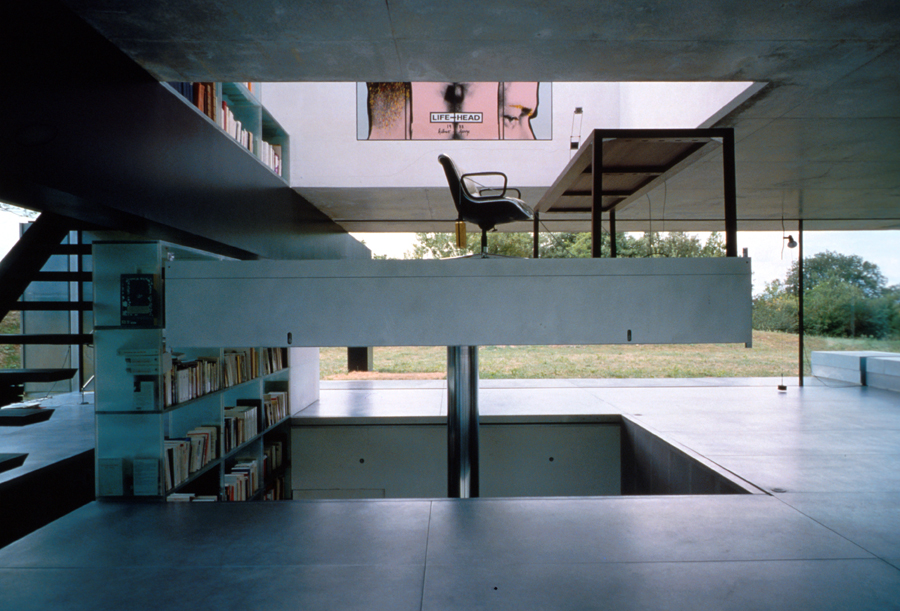
“I am obsessed with the potential of preservation—and erasure”
“I just wonder what is this disingenuity in the world to sell shit that doesn’t last,” asked Tillmans, holding a faulty corkscrew in his hand. “It is the same with buildings. … I find this gap which is created when goods, services, and buildings don’t deliver what they had promised.”
“Of course, it’s the market economy, which maintains a consistent downward pressure” was Rem’s obvious answer, yet he elaborated: “On the other hand, we live in a world with an extremely unstable cocktail of different needs and activities [making it] harder and harder to capture any need that might not change over time.” He added, polemically, that, “maybe we live in a period where not every building deserves eternal life. … Maybe there are also things that deserve temporality.” He then extended the provocation: “I have been obsessed with the potential of preservation, but also with the potential of elimination. If erasure as a part of an architectural repertoire could be viable in Europe, then you would be grateful for all those inferior materials because they almost dictate their own metabolism.”
“Rotterdam was a Dubai in Europe”
On the topic of the erasure in cities, Rotterdam naturally comes to mind. Koolhaas’s hometown and the base of his Office for Metropolitan Architecture (OMA), the city was nearly wiped out during the Blitz of 1940. As Koolhaas pointed out, this was an advantage to architects who proceeded to rebuild it with “incredible ingenuity … with, almost I would say, genius,” and yet “no one had a good word to say for it, ever.
“If I look now on the general lack of respect shown towards a city like Dubai, I start to understand that, at the very beginning, Rotterdam was a kind of Dubai in Europe. It therefore suffered the same incapacity of the educated public to be enthusiastic about it. … The idea that a city can only grow over time, and that the idea of newness or anything which is happening out of nowhere is simply inferior. … We are typically extremely impatient in judging architecture, even though we know ourselves that it takes 400 years for a real city to work.”
“But in Rotterdam, there was an ideal,” mulled Tillmans, “whereas in Dubai it is only about profit.” Mildly outraged, Koolhaas retorted: “When a European uses the word ‘only,’ he typically underestimates the conditions that he typifies as ‘only.’” He explained: “I see in Dubai a situation where more and more places become public, and there is an ambition to restore or even to introduce for the first time an equivalent of public and private spaces.”
Tillman’s leading follow-up question—“because its private spaces are dead?”—prompted a lengthy riposte from Koolhaas:
“I think that death is a matter of perspective; I think that Dubai is not dead and never was dead. It offers a condition that many people enjoy, and this is always an ignored part of Dubai. When I first became involved in the Middle East 15 years ago, it was a total American situation: Black glass boxes and air conditioning throughout the year. … When actually, in the Middle East, six months of the year are really wonderful, and I’ve seen a marked decline and movement away from air conditioning … so I think you really need to be alert that these tendencies are not the same everywhere and that we also re-invent new forms of publicness.”
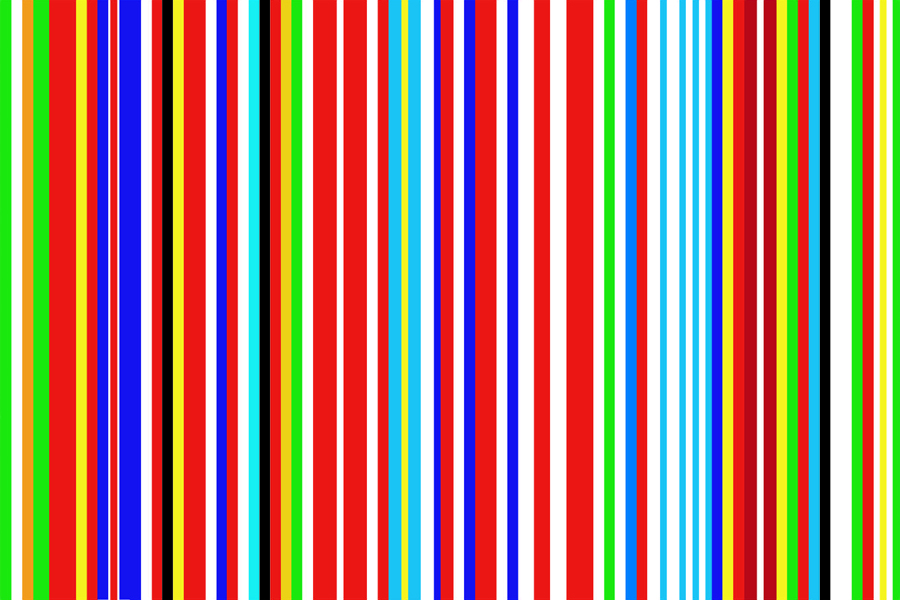
On Europe: “We are unable to grow beyond our own shadow”
“I guess we should talk about the European Union” said Tillmans. “Something we have both been engaged in intensely,” referring to his Anti-Brexit campaign and to OMA’s 2001 Image of Europe exhibition and research. “What is your personal outlook at what can happen?”
Koolhaas’s explanation was scintillating: “There was always a fear to make Europe manifest, because the initiation of the European project was done largely by stealth, since only by stealth could people create the coherence and the blueprint for a condition that could eventually be developed by others. An even greater tragedy is that the project by stealth worked, and that further layers are absent the moment it became explicit. … I do think that that stealth was entirely justified, because it was an outrageous idea at the time. … And I think that we are sitting here as huge beneficiaries of that stealth.”
OMA’s Image of Europe research project, developed by its mirror-division AMO, included the design of a new flag for the EU, a project which was not done by stealth. It was, on the contrary, “an explicit project with an explicit agenda,” which, for Koolhaas, had “an explicit vulnerability”—there was no mechanism to approve its adoption. “The tragedy [with Europe] is that there is no single person who can say, ‘I will be the boss.’”
Koolhaas admits that his “most European moment” came when he joined a reflection group to consider Europe in 2030. “I think it’s totally insane that we have to think about Europe with Europeans only. … but clearly, because of this myopia, we are being defined by others, and are unable to grow beyond our own shadow. Europe is too introverted, and the only extroverted way that we have is to wag fingers at other countries; our only involvement with the world is judgmental, and our involvement with ourselves is too narrow.”
“It seems like we both write about the same sense of extreme danger that is today, and was also 20 or 30 years ago, yet nothing ‘s changed,” interjected Tillmans. “Personally, rather than an apocalyptic mode,” said Koolhaas, in one bluntly inspirational concluding moment: “I try to extract in almost every situation what could still be considered as inspiring, or at least how it could be used as a point of departure for thinking in a slightly different direction.”
On Writing & Junkspace
Koolhaas then reflected on the utility of writing for him: “When I write, I write because I have a freedom, more than I do in architecture, to adopt a certain tone and even represent a different persona. … Before Junkspace, I wrote many texts that try to make the best of a bad situation, like the Generic City, where I looked at the mediocre and the typical and tried to see why it was emerging in such enormous quantities, while also trying to find good qualities within it. For instance, the absence of imposing a way of behaving, which happens when you live in a neutral, boring situation.”
“In Junkspace, it was like one monologue that I wanted to scream about how bad and ugly the world was. So I had enormous fun because I could infantilize everything that was done wrong in a literary style that gave me enormous pleasure. While creating such a big accumulation implied a large argument that would also answer your question about your corkscrew.”
If you liked this article, you should definitely read our story on the premature demise of OMA’s Netherlands Dance Theater.





